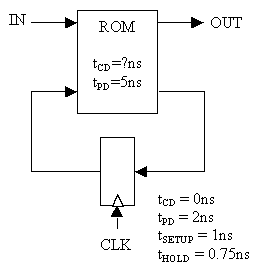Difference between revisions of "Sequential Logic"
GerdIsenberg (talk | contribs) (Created page with "'''Home * Hardware * Sequential Logic''' FILE:sequential04.gif|border|right|thumb|link=http://web.mit.edu/6.111/www/f2005/tutprobs/sequential.html|Sequent...") |
GerdIsenberg (talk | contribs) |
||
| (One intermediate revision by the same user not shown) | |||
| Line 52: | Line 52: | ||
* [https://en.wikipedia.org/wiki/Finite-state_machine Finite-state machine from Wikipedia] | * [https://en.wikipedia.org/wiki/Finite-state_machine Finite-state machine from Wikipedia] | ||
* [http://web.cecs.pdx.edu/%7Eharry/Relay/index.html Harry Porter's Relay Computer] | * [http://web.cecs.pdx.edu/%7Eharry/Relay/index.html Harry Porter's Relay Computer] | ||
| − | * [[ | + | * [[:Category:Passport|Passport]] - [http://www.allmusic.com/album/infinity-machine-mw0000587835 Infinity Machine], [https://en.wikipedia.org/wiki/YouTube YouTube] Video |
| − | : 1976 lineup: [[ | + | : 1976 lineup: [[:Category:Klaus Doldinger|Klaus Doldinger]], [[:Category:Curt Cress|Curt Cress]], [[:Category:Wolfgang Schmid|Wolfgang Schmid]], [https://en.wikipedia.org/wiki/Kristian_Schultze Kristian Schultze] |
: {{#evu:https://www.youtube.com/watch?v=_7CKaWqzqSM|alignment=left|valignment=top}} | : {{#evu:https://www.youtube.com/watch?v=_7CKaWqzqSM|alignment=left|valignment=top}} | ||
| Line 60: | Line 60: | ||
'''[[Hardware|Up one Level]]''' | '''[[Hardware|Up one Level]]''' | ||
| + | [[Category:Passport]] | ||
| + | [[Category:Curt Cress]] | ||
| + | [[Category:Klaus Doldinger]] | ||
| + | [[Category:Wolfgang Schmid]] | ||
Latest revision as of 22:58, 20 January 2020
Home * Hardware * Sequential Logic

A Sequential Logic is a digital circuit where one or more outputs are boolean functions of multiple inputs and the history of the outputs. In contrast to combinatorial logic, a sequential logic requires memory to somehow feed the history of the outputs back to the inputs. Usually, for deterministic and reliable behavior considering internal latencies and propagation delays, a sequential logic is synchronous, that is the memory only change their content on the edge of a clock signal.
Contents
Applications
Sequential logic, that is combinatorial logic combined with memory, is the base of Finite-state machines, Turing machines as well as digital computers.
Sequential Rook Attack
As an further example, a sequential logic may perform the same task as mentioned in Combinatorial Attack and Defend Map, but with less gates in up to seven cycles - similar to the bitboard techniques like Dumb7Fill:
+-------+
+------+ | |
o--/64/-- empty(square) -/64/--| 64:1 |---->| |-----o result reliable / otherwise processing after reset
+------+ | Comb. |-----o A8 is attacked by white rook from south
^ | Logic |
+------+ | |
o--/64/-- wrook(square) -/64/--| 64:1 |---->| |-->--+
+-----.+ | | |
^ o->| | |
/6| | +-------+ |
| | v
+--------------+ |
| | |
| Latch |<----------+
reset o----| |
+---^----------+
|
clk
See also
Publications
- Alan H. Bond (1987). Broadcasting Arrays - A Highly Parallel Computer Architecture Suitable For Easy Fabrication. pdf
- Alan Clements (2005). Sequential Logic. pdf
External Links
- Finite-state machine from Wikipedia
- Harry Porter's Relay Computer
- Passport - Infinity Machine, YouTube Video
- 1976 lineup: Klaus Doldinger, Curt Cress, Wolfgang Schmid, Kristian Schultze